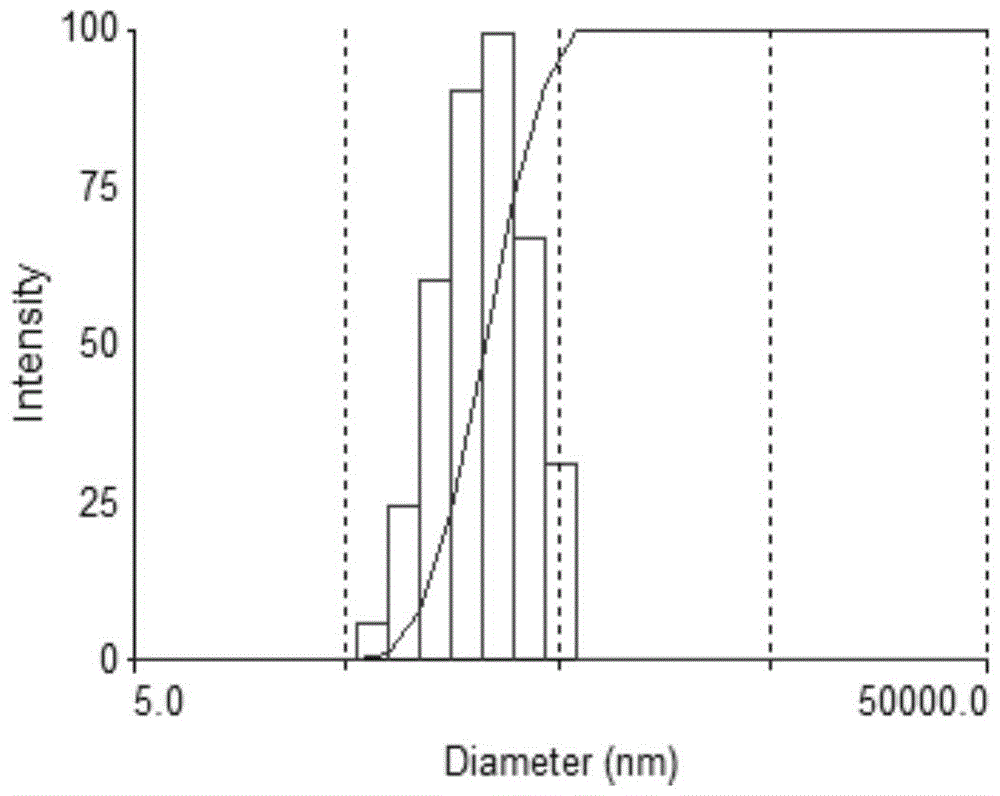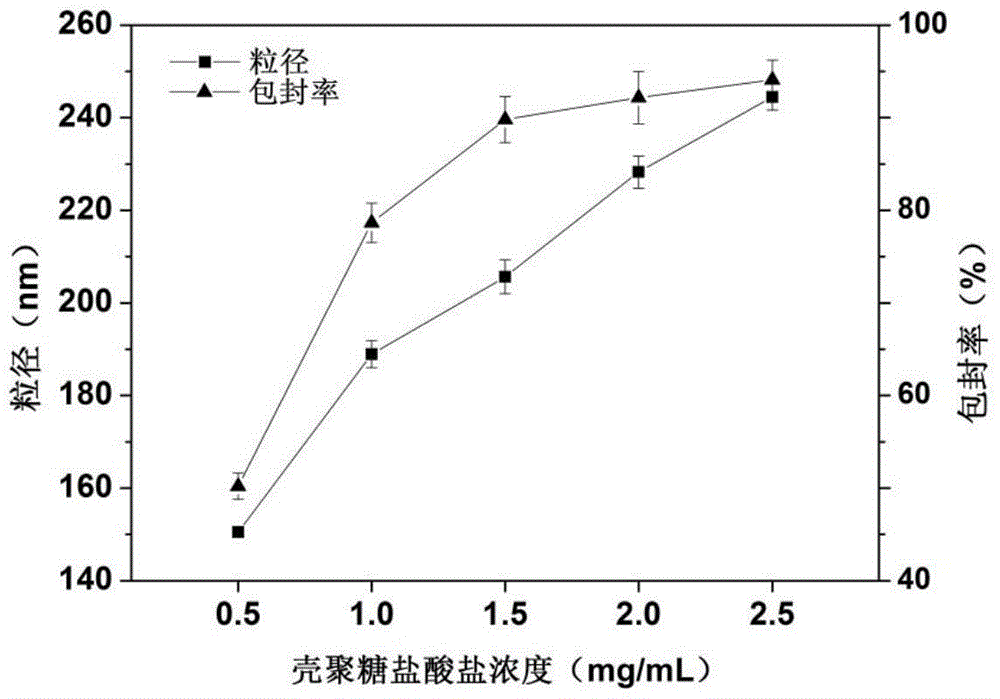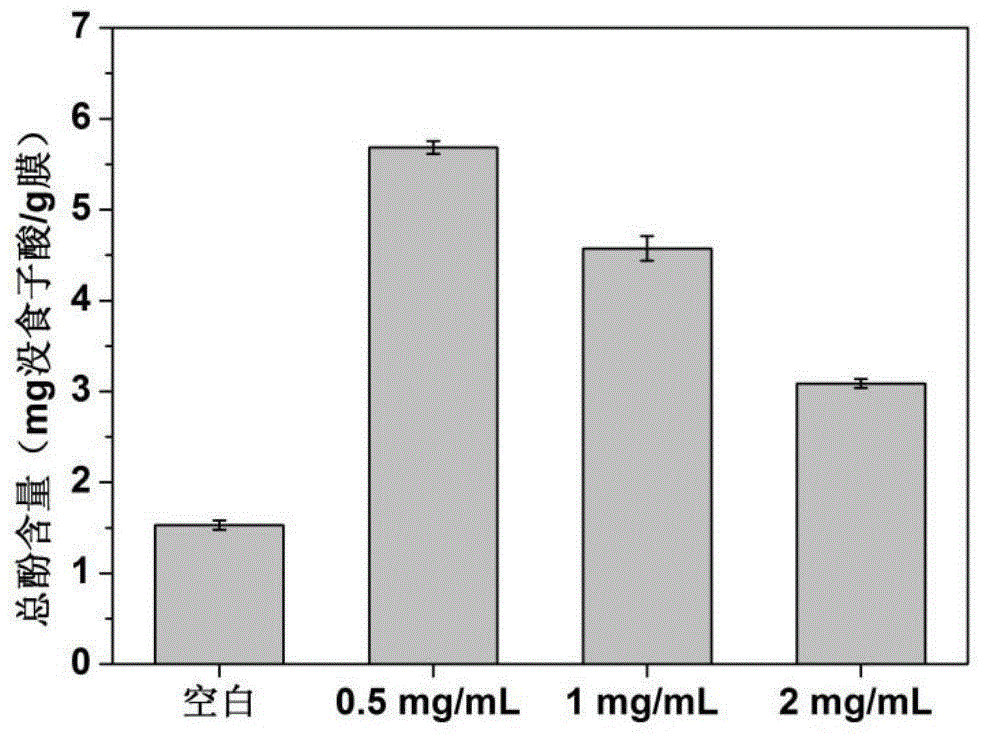An edible film with continuous anti-oxidation function and its preparation method and application
An edible film, anti-oxidation technology, applied in sustainable manufacturing/processing, climate change adaptation, climate sustainability, etc., can solve the problems of film mechanical properties and barrier properties, etc., to improve water permeability, mild conditions, improve The effect of mechanical strength
- Summary
- Abstract
- Description
- Claims
- Application Information
AI Technical Summary
Problems solved by technology
Method used
Image
Examples
Embodiment 1
[0027] In this embodiment, an edible film with sustained anti-oxidation function is provided, which includes, by mass percentage, 0.5-5% tea polyphenols, 1%-10% chitosan hydrochloride, 1.5 %~15% of sulfobutyl-β-cyclodextrin, and the rest is a natural edible biomacromolecule film-forming matrix, and the edible film is chitosan hydrochloride with different encapsulation rates and sizes of tea polyphenols Nanoparticles are added to the natural edible biomacromolecule film-forming matrix; wherein, the natural edible biomacromolecule film-forming matrix is starch, chitosan, modified cellulose, carrageenan, pectin, tara gum One or more of sodium alginate, pullulan, whey protein, soy protein isolate, zein and wheat gluten.
[0028] A kind of preparation method of described edible film with continuous antioxidant function, its steps are:
[0029] (1) Preparation of chitosan hydrochloride nanoparticles with different tea polyphenol encapsulation efficiency and particle size:
[003...
Embodiment 2
[0036] (1) The preparation of chitosan hydrochloride nanoparticles with different tea polyphenol encapsulation efficiency and particle size is the same as in Example 1.
[0037] (2) Preparation of film-forming solution: after a certain amount of tara gum (mass concentration 2%) was stirred and dissolved at 35° C., glycerin was added as a plasticizer according to the mass ratio of 25% (tara gum). Mix 75 mL of nanoparticles prepared in step (1) with 25 mL of tara gum film-forming matrix solution, stir evenly, and centrifuge to degas.
[0038] (3) Preparation of film: Take a certain volume of the film-forming solution prepared in step (2) and pour it into a mold (10×10cm), dry it at 35°C for 24 hours, and place it in a constant temperature and humidity box (temperature 25°C, relative humidity 53 %) for at least 48 hours to obtain an edible film with sustained antioxidant function.
Embodiment 3
[0040] (1) The preparation of chitosan hydrochloride nanoparticles with different tea polyphenol encapsulation efficiency and particle size is the same as in Example 1.
[0041] (2) Preparation of film-forming solution: a certain amount of whey protein (mass concentration 6%) was stirred and dissolved at 80° C., cooled to room temperature, and glycerol was added as a plasticizer in a proportion of 30% (whey protein). Mix 75 mL of nanoparticles prepared in step (1) with 25 mL of whey protein film-forming matrix solution, stir evenly, and vacuum degas.
[0042] (3) Preparation of film: Take a certain volume of the film-forming solution prepared in step (2) and pour it into a mold (10×10cm), dry it at 30°C for 36h, and place it in a constant temperature and humidity box (temperature 25°C, relative humidity 53 %) for at least 48 hours to obtain an edible film with sustained antioxidant function.
PUM
| Property | Measurement | Unit |
|---|---|---|
| concentration | aaaaa | aaaaa |
Abstract
Description
Claims
Application Information
 Login to View More
Login to View More - R&D
- Intellectual Property
- Life Sciences
- Materials
- Tech Scout
- Unparalleled Data Quality
- Higher Quality Content
- 60% Fewer Hallucinations
Browse by: Latest US Patents, China's latest patents, Technical Efficacy Thesaurus, Application Domain, Technology Topic, Popular Technical Reports.
© 2025 PatSnap. All rights reserved.Legal|Privacy policy|Modern Slavery Act Transparency Statement|Sitemap|About US| Contact US: help@patsnap.com



